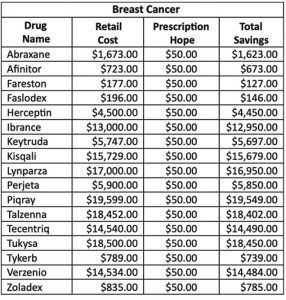 Breast cancer is a pervasive and potentially life-threatening disease that affects millions of individuals worldwide. While early detection through regular screenings and improved awareness has led to better outcomes, the journey of battling breast cancer often involves various treatment modalities, including medications. In this article, we will explore the different types of medications used for breast cancer treatment, shedding light on the innovative approaches that have emerged in recent years.
Breast cancer is a pervasive and potentially life-threatening disease that affects millions of individuals worldwide. While early detection through regular screenings and improved awareness has led to better outcomes, the journey of battling breast cancer often involves various treatment modalities, including medications. In this article, we will explore the different types of medications used for breast cancer treatment, shedding light on the innovative approaches that have emerged in recent years.
Chemotherapy
Chemotherapy has been a cornerstone in breast cancer treatment for decades. It involves the use of powerful drugs that target rapidly dividing cancer cells throughout the body. Although chemotherapy can have significant side effects, such as nausea and hair loss, it remains an essential part of treatment, especially for aggressive forms of breast cancer.
Hormone Therapy
Hormone therapy is primarily used for breast cancers that are hormone receptor-positive. These tumors grow in response to hormones like estrogen and progesterone. Medications like Tamoxifen and Aromatase Inhibitors are used to block the effects of these hormones, effectively slowing or stopping the growth of hormone-sensitive tumors.
Targeted Therapies
Targeted therapies are a newer class of medications that specifically target cancer cells while sparing healthy ones. Trastuzumab (Herceptin) and Pertuzumab (Perjeta) are examples used for HER2-positive breast cancers. They work by blocking the signals that encourage cancer cell growth.
Immunotherapy
Immunotherapy has gained prominence in breast cancer treatment. Drugs like Pembrolizumab and Atezolizumab enhance the body’s immune system to identify and destroy cancer cells. Immunotherapy is especially promising for triple-negative breast cancers, which lack hormone receptors.
PARP Inhibitors
Poly ADP-ribose polymerase (PARP) inhibitors, such as Olaparib and Talazoparib, are used for patients with certain gene mutations like BRCA1 or BRCA2. These medications interfere with the DNA repair process in cancer cells, leading to their demise.
Radiation Sensitizers
Medications like Veliparib can enhance the effectiveness of radiation therapy. They make cancer cells more susceptible to the damaging effects of radiation, improving the chances of eradicating cancer cells.
Neoadjuvant and Adjuvant Medications
Neoadjuvant medications are administered before surgery to shrink tumors and make them easier to remove. Adjuvant medications are given after surgery to reduce the risk of cancer recurrence. The choice of medication depends on the specific characteristics of the cancer.
Combination Therapies
Often, a combination of medications is employed to maximize treatment effectiveness and minimize side effects. This may involve combining chemotherapy with targeted therapies or hormone therapy.
Clinical Trials
Breast cancer research continues to evolve, with ongoing clinical trials exploring new medications and treatment approaches. Participation in these trials offers hope for patients who have exhausted standard treatment options.
In conclusion, the landscape of breast cancer treatment has seen remarkable advancements in recent years. Medications tailored to the specific characteristics of the cancer, along with innovative therapies like immunotherapy, have provided new avenues for fighting this disease. However, it’s crucial for patients and their healthcare teams to work closely together to determine the most appropriate treatment plan based on the individual’s diagnosis and needs. Breast cancer treatment is not one-size-fits-all, and ongoing research is paving the way for even more effective medications and therapies in the future.
Prescription Hope is a national prescription drug benefit program that offers 1,500 Brand-Name medications at $50 per medication per month no matter the retail cost.
For the set price of $50 per month per medication, our advocates order, manage, track, and refill your prescription medications through patient assistance programs for those who qualify. We manage your enrollment with these programs throughout the year, working with over 180 pharmaceutical manufacturers and their pharmacy. There are no other costs, fees, or charges associated with your medication or our program.
Visit, www.PrescriptionHope.com today to see if you qualify.
 Central Florida Health and Wellness Magazine Health and Wellness Articles of the Villages
Central Florida Health and Wellness Magazine Health and Wellness Articles of the Villages



